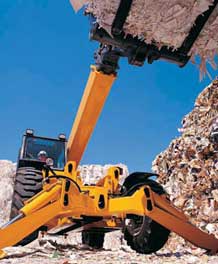Error processing SSI file
BGS Home
»
Discovering geology
»
Climate change
»
Carbon capture and storage
» Biomass or co-fired power station
Biomass or co-fired power station

A power station can generate electricity by burning fossil fuel, but also power stations can be designed to burn fossil fuel and biomass together (called co-firing) or just biomass.
Most co-firing power plants burn solid biomass like wood and agricultural waste along with coal, but some can burn a mix of natural gas and biogas. Because burning biomass is carbon neutral, co-firing reduces the emission of greenhouse gases.
The main advantage of co-firing is that it can be done in existing power plants with little or no modification, allowing for comparatively inexpensive and rapid reductions in greenhouse gases.
See future CCS options Biomass or co-fired power station.

Carbon capture
CO2 storage
Effects on climate change
Future CCS options
Types of thermal power plant
Error processing SSI file
See also






